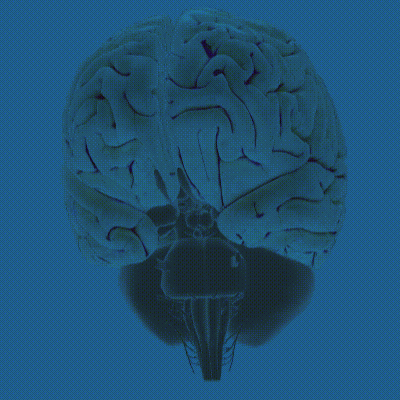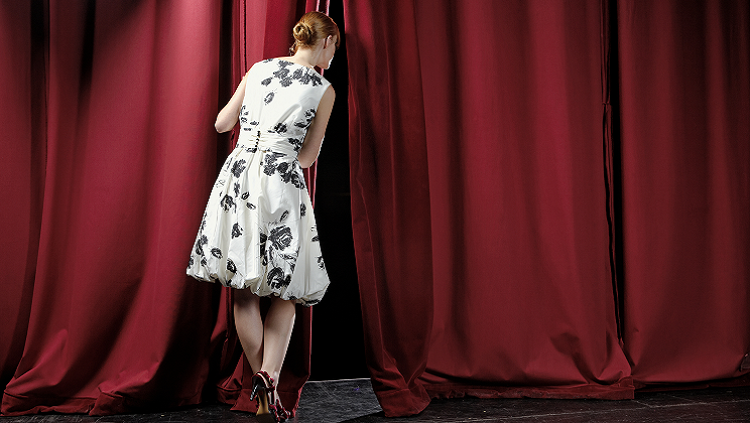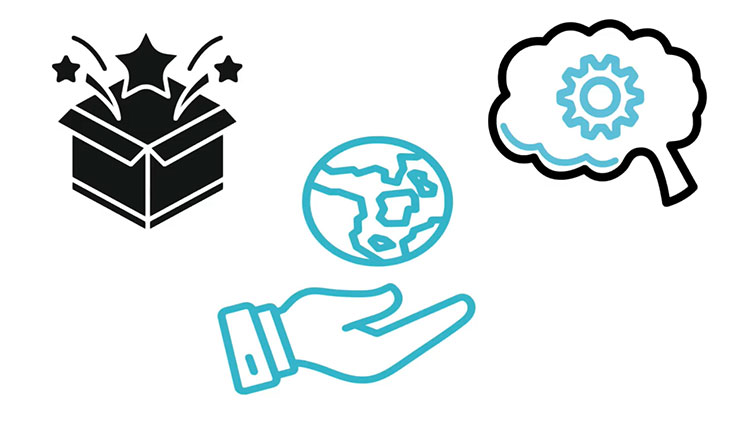How Playing in Empty Stadiums Affects Athletes
- Published26 Jul 2021
- Author Calli McMurray
- Source BrainFacts/SfN

For more than a year, NBA and NFL athletes played before “virtual” spectators: screens broadcast real-time video feeds of fans watching the game from their homes. The German soccer league Bundesliga took to the pitch in silent, empty stadiums; ballet companies performed on Zoom. The COVID-19 pandemic rendered gathering in large groups, especially those of the size that fill stadiums and performance venues, unsafe. Even the Summer Olympics in Tokyo — already postponed from last summer — isn’t allowing fans to attend. Yet professional sports teams and performers continue on — just without the audience.
For audiences, watching these events from home paled in comparison to experiencing them in person. For athletes, the lack of fans might relieve anxiety or hurt their motivation — but those at the top of their game likely aren’t fazed.
Somebody’s Watching Me
Humans act differently when they have an audience. The presence of other people often improves performance via a phenomenon called social facilitation. This effect shows up in other species: cockroaches run faster around other cockroaches, and chickens eat more food when other chickens eat around them. But the change isn’t always helpful. In some experiments, people perform better at simple tasks when they have an audience but slow down when they do something more complex. And for some people, the terror of being in front of a large enough crowd makes them perform terribly — they choke.
Vikram Chib, assistant professor of biomedical engineering at the Johns Hopkins University School of Medicine, expected to see this choking at play when people performed a motor task in an fMRI scanner while being watched. In prior work, Chib’s team found people performed the task better when money was at stake, but if the amount was too high they choked and performed worse. “We thought, ‘okay, well, the cool thing to do will be to have people be watched while they're doing this task. And they're definitely going to choke under pressure,’” Chib says. “But instead, what we found is that for the majority of people their performance actually increased when they were being watched.”
Being watched increased activity in three brain areas: the dorsal medial prefrontal cortex, which is involved in thinking about the mental states of others; the ventral medial prefrontal cortex, a region involved in assessing the value of rewards; and the ventral striatum, an area that combines motivational and motor information to drive performance. The amount of activity in the dorsal medial prefrontal cortex was linked to the degree of performance improvement brought about by being watched. “What we think is that being watched serves as some sort of added value that then motivates your performance,” Chib says. The activity in and communication between these brain regions may be “enhancing your motivated motor output and getting you to perform better.”
Just like with monetary rewards, more motivation is not always a good thing. “The idea here is perhaps the social incentive is not high enough to get us to a domain where people are choking,” Chib says. In the experiment, only two people watched the participants perform the task; the presence of more people may start to impair performance. This threshold varies from person to person: “People that had more social anxiety had more activity in the dorsal medial prefrontal cortex when they're being watched,” Chib says. People with more social anxiety may start to choke earlier than people unfazed by crowds.
It’s What’s Inside That Counts
The effects of social facilitation also vary among athletes. But for those at the top of their game, the presence or lack of an audience doesn’t affect them. “Part of the mastery of craft is that the external conditions do not determine an internal state of being,” says Michael Gervais, a sports and performance psychologist who works with the Seattle Seahawks and Team USA athletes at the postponed 2020 Tokyo Olympics. “For true masters of the craft, this did not matter.”
For athletes and performers still developing this ability, the crowd can be either helpful or harmful. For some, “a crowd can help narrow focus because there's something to push up against,” Gervais says. Athletes who rely on fans for an internal boost were forced to find new motivations to perform during the COVID-19 season. But the crowd can also become a distraction. “Part of elite performance is focusing on the right thing at the right time in the right way,” Gervais says. An external noise — like someone in the audience talking — can be a distraction when the athlete focuses on it, he says. “For the majority of fan conditions, it's not the external distraction. It's that it becomes an internal distraction for the athlete.” This only applies to average fan behavior: even the best athletes can’t ignore fans who throw things onto the court or field.
Games with virtual or absent crowds met a need during the pandemic, but they are unlikely to stick around. Part of the appeal of watching live sports is the appreciation of the artistry and craft of elite performance, Gervais says, but also the joy of group experience. During Seattle Seahawks games, “there are songs that we would play [during defensive plays]. The crowd would come alive and in return, the athletes would start to dance. And then that in return would amplify the crowd even more,” Gervais says. The electricity of this “virtuous cycle” will be awaiting fans as sports stadiums start reopening their doors.
CONTENT PROVIDED BY
BrainFacts/SfN
References
Bond, C. F. (2001). Social Facilitation, Psychology of. International Encyclopedia of the Social & Behavioral Sciences, 14290–14293. doi:10.1016/b0-08-043076-7/01804-0 https://www.sciencedirect.com/science/article/pii/B0080430767018040
Bond, C. F., & Titus, L. J. (1983). Social facilitation: A meta-analysis of 241 studies. Psychological Bulletin, 94(2), 265–292. https://doi.org/10.1037/0033-2909.94.2.265
Vikram S Chib, Ryo Adachi, John P O’Doherty, Neural substrates of social facilitation effects on incentive-based performance, Social Cognitive and Affective Neuroscience, Volume 13, Issue 4, April 2018, Pages 391–403, https://doi.org/10.1093/scan/nsy024
What to Read Next
Also In Thinking & Awareness
Trending
Popular articles on BrainFacts.org





.jpg)














